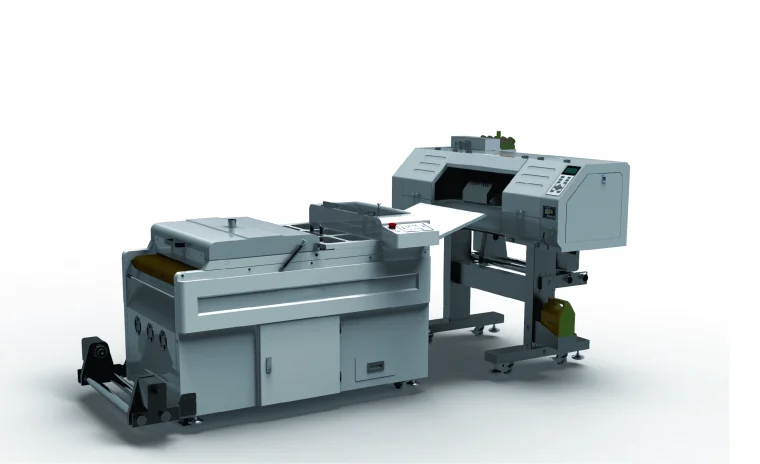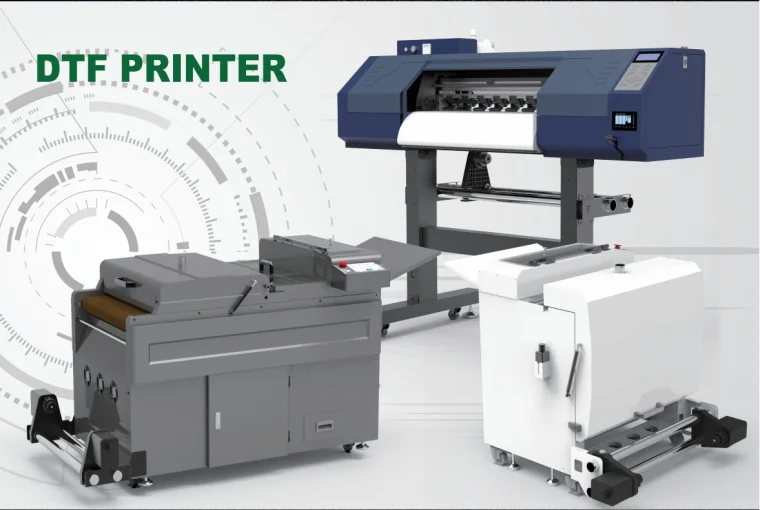- This topic is empty.
-
AuthorPosts
-
14/06/2024 at 18:33 #78810
In recent years, the textile printing industry has witnessed major advancements in technology, changing the way garments are printed. Direct to Film (DTF) printers are one such innovative printing method. DTF printing offers many advantages over traditional printing methods, making it a popular choice for efficient and environmentally friendly garment printing. In this article, we will explore DTF printers, their applications, and the benefits it brings to the fashion industry and the environment.
Introduction to DTF Printing
DTF printing is a relatively new technique that involves printing designs directly onto a special film that can be transferred onto fabrics. Unlike traditional methods like screen printing or heat transfer, DTF printing eliminates the need for intermediate steps such as creating screens or cutting vinyl. Instead, the design is printed directly onto a thin film using specialized DTF printers with specially formulated inks.

How DTF Printing Works
The process of DTF printing involves several steps:
1.Design Creation: The first step is to create or import the desired design into a computer software program compatible with the DTF printer.
2.Printing onto Film: The design is then printed onto a thin film using a DTF printer equipped with specialized inks. The printer applies the inks directly onto the film, creating a vibrant and detailed image.
3.Film Transfer: Once the design is printed, it is transferred onto the fabric by placing the film onto the garment and applying heat and pressure. The heat activates the adhesive on the film, allowing it to bond with the fabric fibers.
4.Peeling and Finishing: After the transfer process, the film is peeled off, leaving behind the printed design on the fabric. The fabric is then cured to ensure the durability and longevity of the print.
Applications of DTF Printing
DTF printing offers a wide range of applications in the fashion industry:
1.Custom Apparel: DTF printing allows for the creation of custom apparel with intricate designs, vibrant colors, and high-resolution prints. This makes it popular in the production of customized t-shirts, hoodies, caps, and other garments.
2.Fashion Design: DTF printing provides fashion designers with the ability to unleash their creativity by printing unique patterns, textures, and graphics directly onto fabrics. This opens up new possibilities for innovative and avant-garde fashion designs.
3.Small Batch Production: DTF printing is particularly advantageous for small-scale production runs. It eliminates the need for costly setup processes, making it more cost-effective and time-efficient for producing limited quantities of garments or prototypes.
4.Print-on-Demand: With the rise of e-commerce and print-on-demand services, DTF printing is a preferred choice for many businesses. It enables the production of garments only when they are ordered, reducing inventory costs and waste.

Advantages of DTF Printing
DTF printing offers several advantages over traditional printing methods:
1.Vibrant and Detailed Prints: DTF printing produces high-quality prints with vibrant colors, sharp details, and excellent color saturation. The prints are long-lasting and resistant to fading or cracking.
2.Versatile and Compatible: DTF printing can be done on a wide range of fabrics, including cotton, polyester, blends, and even leather. It is compatible with various garment types, sizes, and shapes.
3.Environmentally Friendly: Unlike traditional printing methods that often involve the use of harmful chemicals or excessive water usage, DTF printing is more environmentally friendly. It requires fewer chemicals, generates less waste, and consumes less water.
4.Faster Turnaround Time: DTF printing eliminates the need for complex setup processes, such as creating screens or cutting vinyl. This significantly reduces the production time, allowing for faster turnaround times and increased productivity.
5.Cost-Effective: With DTF printing, there are no setup costs associated with creating screens or molds, making it more cost-effective for small-scale production or custom printing. It also reduces the risk of errors or misprints, minimizing material wastage.
6.Washability and Durability: DTF prints are highly washable and durable. The prints withstand repeated washing and maintain their color and quality over time. They do not crack, peel, or fade easily.

Conclusion
The Direct-to-Film (DTF) printer has emerged as a game-changer in the textile printing industry. It offers a more efficient and environmentally friendly alternative to traditional printing methods. With its vibrant and detailed prints, versatility, and compatibility with various fabrics, DTF printing has found applications in custom apparel, fashion design, small-batch production, and print-on-demand services. The advantages of DTF printing, including faster turnaround times, cost-effectiveness, and washability, make it an attractive choice for businesses and individuals alike. As the demand for sustainable and efficient printing methods continues to grow, DTF printing is poised to play a significant role in the future of clothing printing, contributing to a more sustainable and innovative fashion industry.
Orinjet Digital Technology is committed to providing cutting-edge DTF printers solutions that meet the diverse requirements of modern printing. With our advanced DTF printers, customers can unlock new possibilities and elevate their printing capabilities to unprecedented levels.
Orinjet Digital Technology
LornaChia@orinjet.com -
AuthorPosts
- You must be logged in to reply to this topic.